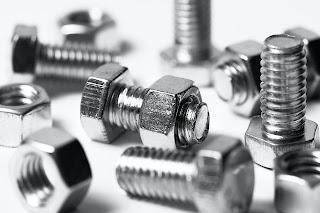Hexagons
Nature uses hexagons because of the strength it provides. Also, of squares, equilateral triangles, and hexagons, the hexagon packs together more cells in one plane, using less space, than the other two do. In nature, the hexagon shape is found in tortoise shells, snowflakes, honeycombs, and bees’ nests. You’ll find many more examples if you care to inspect this further.
If hexagons are good enough for nature, it’s good enough for
manmade products as well. Engineers have been using the hexagon for their
creations for hundreds of years. Some, like bridges, houses, and other
buildings use this concept because of the strength and use of less space. Using
hexagon shaped floor and wall tiles are other ways to not only use less space
but also as an eye-appealing way to decorate. A soccer ball, made from hexagon
and pentagon shapes, helps the ball maintain its shape as it’s being kicked
around, improves the ball’s aerodynamics, and helps players maintain control
(Source: https://soccerwhizz.com/why-soccer-balls-have-pentagons/#:~:text=Soccer%20balls%20have%20pentagons%20and,as%20close%20control%20for%20players.)
Other reasons to use a hexagon might be because the shape makes it easy to grip, such as pencils, hex screw heads, and hex nuts.
As machinists, we must make sure any hex found in a product we make is exact so that it will function as it should and will remain stable and safe for users of the products we make. That’s why I have created hexagon programs for the GraphNCalc83 iPhone calculator to help you double check your own calculations.





Comments
Post a Comment